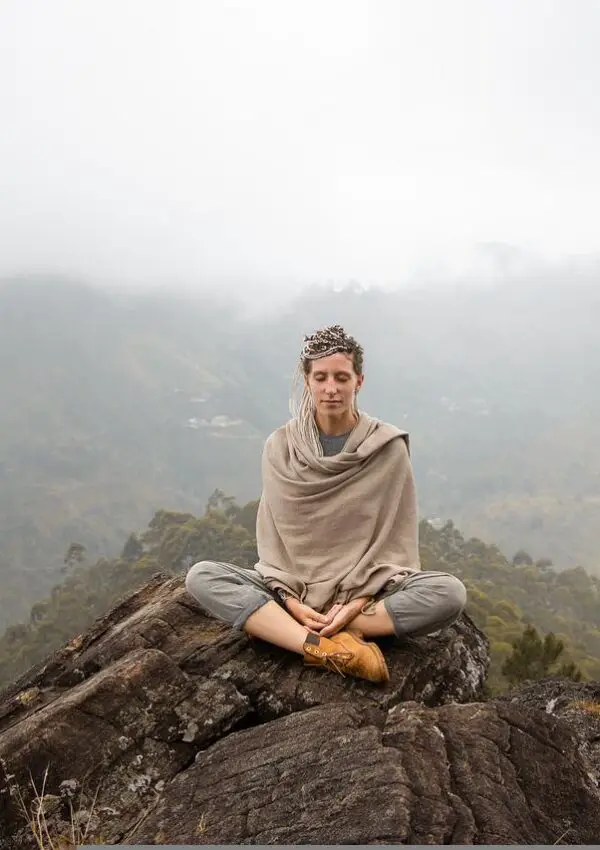
Meditation has been used since time immemorial to help both physically and psychologically. However, not all meditation types are suitable for everyone. Meditation is training the mind, just like exercise is training the body.
This article will compare two types of meditation and how you can incorporate them into your daily lives to improve your overall well-being.
1. Spiritual Meditation
Spiritual meditation is a journey of self-discovery. It strips you of all perceptions of yourself and enables you to think beyond your surroundings.
Benefits of Spiritual Meditation
Although you cannot measure spirituality, you can draw many benefits from this type of meditation, including:
Inner peace – helps you sink into inner peace and let go of everything.
Increased creativity – You become more creative in your daily activities through higher consciousness.
Self-acceptance – helps you realize who you are and accept your strengths and weaknesses.
Clarity of life – It empowers you and helps you focus on your goals and how to achieve them.
Meditation encourages you to undertake every activity with intention.
How to Do Spiritual Meditation
This technique requires precise steps that you need to follow. Here is a step-by-step guide on how to achieve the best spiritual meditation:
- Pick a comfortable place.
Before you begin this practice, you have to pick a place where you are most comfortable. The location should be as quiet as possible, away from city noises and toxic environments.
- Choose a sitting position.
Pick a position that you are most comfortable in but not too relaxing to make you fall asleep.
Some suggestions on sitting positions include:
Vajrasana: You sit on your heels, with the calves beneath the thighs. There is a four-finger gap between the kneecaps, and the first toe of both feet touches each other and sits erect.
Padmasana: With your legs crossed, you place each foot on the opposite thigh.
You can also sit on a chair or stand with your back against the wall, whatever works for you.
- Internalize the process
Loosen up and let everything go. Be a passive spectator of your thought process.
Even when you sit to meditate, thoughts will constantly bombard you. Let those ideas flow in, but you should resist the strong urge to respond to them.
- Say a prayer
While your mind is in hibernation, utter a word of prayer. It does not have to relate to a particular religion. It can be a word or phrase that inspires you. Furthermore, it could even be a mantra.
Relax and concentrate on your breathing. Recite your mantra while exhaling as you lock out the thoughts going through your mind.
- Reflect upon yourself
At this point, all attention should be on your body. Be very attentive to what your body feels while remaining calm and relaxed.
Slowly open your eyes and maintain the same position for a few minutes. Let the effects sink in while you enjoy the results of the process. Do you feel as agitated as you were before the procedure?
Finally, zone out of the meditation, do a few stretches and go about your daily activity.
2. Walking Meditation
Walking meditation is an active kind of meditation that demands you to be mindful of your surroundings while moving. It allows you to appreciate the joy of walking.
Because walking is a part of your daily life, it is far less intimidating for novices. The main focus is on your walking. This motion assists you in becoming more conscious of your body.
It’s a common fallacy that the only method to meditate is to close your eyes and sit silently in a corner. That is only one method of meditation.
If you’re new to meditation, restless, or sitting all day at work, a seated meditation practice might be best.
The technique, which has its roots in Buddhism, helps you feel balanced, serene, and aware of your surroundings.
Walking meditation is a form of mindfulness meditation.
You walk in circles, back and forth, or in a straight line during walking meditation. You can also choose to do your walking meditation over a long distance.
The pace is usually slow, but it varies depending on the technique. Walking meditation sessions are mostly done between seated meditations.
Benefits of Walking Meditation
Walking meditation has a ton of benefits. Some of them include;
- Boosts blood circulation
If your work involves extended periods of sitting down, then walking meditation can significantly help you boost blood flow to all parts of your body. It also helps rid your body of sluggish feelings and raise your energy levels.
- Improve blood sugar level
Walking meditation has been proved to reduce blood sugar levels, especially in people with type 2 diabetes.
If you practice mindful walking three times a week for thirty days, you’ll reap the benefits.
- Improve sleep pattern
Walking meditation is a form of exercise, though moderate. Any form of exercise is known to impact the quality of sleep positively.
Walking improves muscle tension and leaves you feeling better. All these, coupled with the calmness from meditation, lead to better sleep quality.
- Enhance balance and coordination
Studies have shown that walking meditation improves leg and ankle coordination, especially in older people.
- Inspire creativity
This mindfulness practice brings focus to your way of thinking and sparks creativity.
Meditation Techniques for Beginners
These tips will help you start your journey of meditation:
Sit or lie down in a comfortable position. You might want to consider purchasing a meditation chair or cushion.
Close your eyes for a moment.
Don’t struggle to control your breathing; just let it happen naturally.
Concentrate on your breath. As you breathe, pay attention to how your body moves.
Listen to your chest and rib cage. Concentrate on your breathing without attempting to manipulate its rate or intensity. Return your attention to your breath whenever your mind wanders.
If you’re starting, practice for a short period, like 5-10 minutes, then gradually do it for longer as you get used to it.
Bottom Line
Meditation does not belong to any religion or faith. It’s practiced the world over to create harmony and inner peace.
Meditation is a process you need to master. However, there’s no right or wrong way to meditate.





